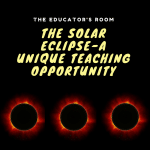[fusion_builder_container hundred_percent=”yes” overflow=”visible”][fusion_builder_row][fusion_builder_column type=”1_1″ background_position=”left top” background_color=”” border_size=”” border_color=”” border_style=”solid” spacing=”yes” background_image=”” background_repeat=”no-repeat” padding=”” margin_top=”0px” margin_bottom=”0px” class=”” id=”” animation_type=”” animation_speed=”0.3″ animation_direction=”left” hide_on_mobile=”no” center_content=”no” min_height=”none”][bctt tweet=”When did we get so busy teaching we forgot children learn? I don’t think teachers have forgotten this, but there seems to be a demand from above that is pushing this “learning”. “] It seems the focus is now on a checklist of accomplishments and no longer on the process. It seems the focus is now on results and not the journey. It seems the focus is now on numbers and not children. It is important to help students see the process of learning which involves play, exploration, discussion and interactions. According to Morihei Ueshiba, “Failure is the key to success; each mistake teaches us something.”
Think about the last time you learned something new. Something you were excited about. What made it exciting? Did you read about it from a text and then do some worksheets over the content? Was there a test? Did you talk to someone about what you learned? What made it fun? Teachers need to bring this excitement to the classroom daily. It is our responsibility to our students. We know what is best. With creativity we can incorporate standards into projects that excite students to learn.
There are so many ways to help your students find excitement in the classroom. Don’t blame the testing and the administration. Don’t blame the standards and common core. Don’t just throw in the towel. Do what you do best! Teach. Model. Discuss. Let your passion show. Bring art and music and movement to your room so all learners connect and grow. Jump into the deep end!
In my classroom we do this all the time. My favorite way to jump into the deep end and push students is through questioning. I recently saw a classroom idea where they had a question corner. Students simply wrote questions they had (about anything) on sticky notes and left them there. This gives the teacher information about plugging into students interests. You can match reading books, content, projects and more to their questions. It also provides an opportunity for students to do some research when they are finished with class work. They can research to find an answer for their own question or someone else. Turn this into speaking, listening and writing content. The possibilities are endless and the excitement will be contagious.
Another jump we take is into art. I am a horrible artist, but my students always love to draw. This quarter we learned about animal systems. The students were also learning idea as a writing trait. We made connections and asked questions for reading comprehension. These skills all relate and can be learned though science content, experiments, text and art.
Read works is a wonderful resource to find text for use in the classroom. I found some articles and students used them to learn about animal senses and adaptations. We watched video clips. In these lessons we covered reading, writing and science standards. Incorporating these three ideas allowed students to synthesize their learning and think at a much deeper level while making connections naturally.
Towards the end of the unit students created their own animal. The animals had to have adaptations to show how they could survive in their environment. The drawings were then written about in a narrative story format. They told of an encounter their animal had with a predator. My kids loved using their creativity and did further research to bring facts to their story. I used their writing to give feedback and ask questions about the adaptations. Using art to express themselves brought excitement to our learning.
The final step, for assessment, was to create insects. Students drew a sketch in their science journal and labeled the insects parts. We did a cool coffee filter activity with washable markers and spray water. Students thought of the habitat their insect lived in and used those colors to represent the background abstractly on the coffee filter. Spraying water on the filter blended the colors together. Finally, students wrote an informative paragraph to explain how their insect survived in that habitat. The motivation to write was high in my classroom of 14 boys and 7 girls. This is not an easy challenge to fulfill.
All learning is a process. As we went through our science unit this nine weeks students corrected misinformation about animals and learned about adaptations and animal systems. Allowing them to research and represent animals through art increased their motivation. We know how students learn. We know how to make classrooms fun. I know there are many demands and restrictions today on teachers, but give yourself the freedom of jumping into learning. [bctt tweet=”The failure you see along the way will be a path of mistakes that leads you to success.”][/fusion_builder_column][/fusion_builder_row][/fusion_builder_container]



